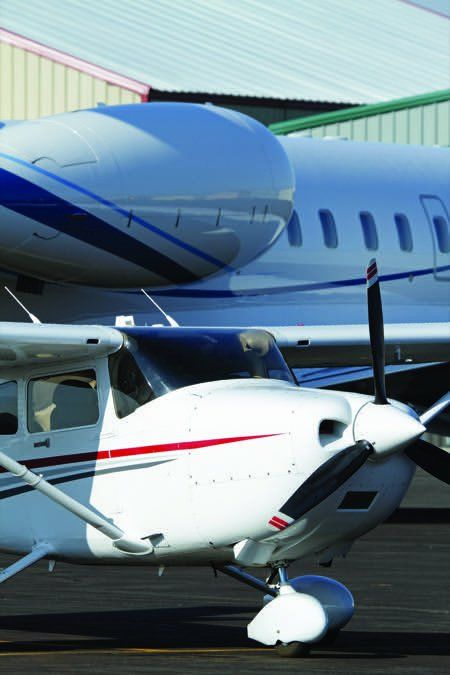At some point in your flying career, you likely graduated from your trainer to flying different aircraft. Maybe you gained access to a fleet of aircraft through a club or flight school, an FBO or a Part 135 charter company. Or you moved to light sport aircraft, a plane you built or a plane you bought. Perhaps you stepped up quickly to higher-performance aircraft, those with more horsepower that can swing gear or have two engines.
My flying has followed a similar trajectory, from trainer, to rentals, to owning a single-engine aircraft. Recently, I made a career shift into the world of Part 135 passengers, cargo and backcountry flying working for a small company in Idaho that also rents airplanes. Like most flight schools, the company has a garden-variety 172 and 172RG. And like most backcountry charter companies, it also has a turbocharged Cessna 206. But at the heart of it all are two Britten-Norman BN-2 Islanders for backcountry, two Navajo Chieftains for passenger and cargo operations, a Piper Seneca II that mostly does light, rural cargo, and my latest ride, a Cessna Caravan. Altogether, there’s a sharp uptick in the number of planes I will be flying. Between the company’s training and sign-off for each plane in accordance with our training manual, I have already learned a lot, mostly about the challenges, risks and rewards of transitioning from plane to plane.
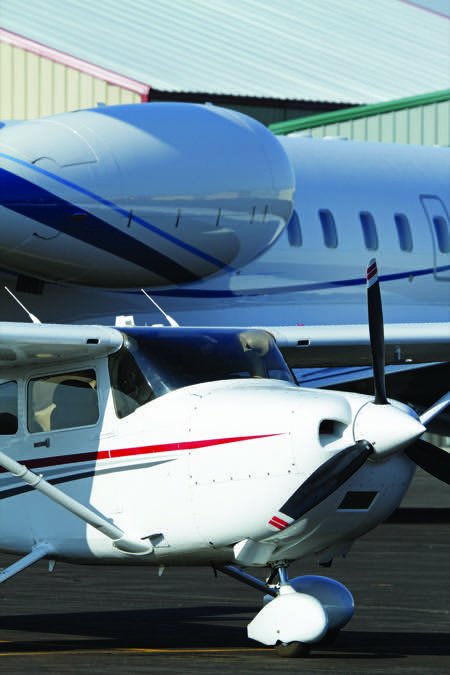
Transitioning Up
Transitioning from your first plane to the second, third and so on, adds to your experience. Transitioning safely, even among single-engine piston-powered airplanes, takes time and consumes a lot of mental bandwidth. When you move to faster planes, with busier cockpits and where everything happens very quickly, transitioning gets a lot more challenging and academic. It takes a lot of reading, studying and testing to understand the aircraft systems, performance numbers and idiosyncrasies. The flying may feel comparatively easy, but every plane comes with its own set of risks, particularly when you are flying multiple aircraft types back-to-back.
Early in my flying, one of the hardest initial transitions for me was moving from a low-wing airplane to one with its wing mounted high. I finished my private pilot in a Cherokee 140 while in my teens, but the first plane I had regular access to was a Cessna 152. The view out the side windows on landing was completely different and in the flare, I finally could really feel ground effect or the lack thereof. (I almost think transitioning from high-wing to low-wing, or vice versa, should be required of student pilots.)
Later on, I flew a 172, a 172 Hawk XP with a constant-speed prop and cowl flaps, an older turbocharged 206 (a slight deviation from the pattern), a 182 and a 180. While they all were technically a different airframe than the other Cessnas, each flew very much like the others in the family. This kind of incremental step-up trajectory is a fairly common. Pilots who originally trained in Cherokees often step up to Saratogas.
By the time I moved up to planes with two engines and retractable gear, I had around 1500 hours. The experience made getting a multiengine rating a bit easier. There’s a lot to do in a twin and even the trainer was faster than the planes I had previously flown. The critical part of getting through the multiengine rating was getting to know the aircraft I was flying, including new procedures and additional critical airspeeds.
Oddly, the easiest transition for me has been stepping up to the Caravan. It flies like a bigger Cessna 206 but with a much stronger and easier-to-manage engine. My old turbocharged 206 kept me much busier—keeping an eye on six sets of cylinder and exhaust gas temps, managing the mixture, managing descents for shock cooling, etc. On the other hand, the Navajo and Seneca I fly—both also equipped with turbocharged engines—have twice as much to deal with as the Caravan.
Stepping Up May Not Be As Simple As it Might Appear
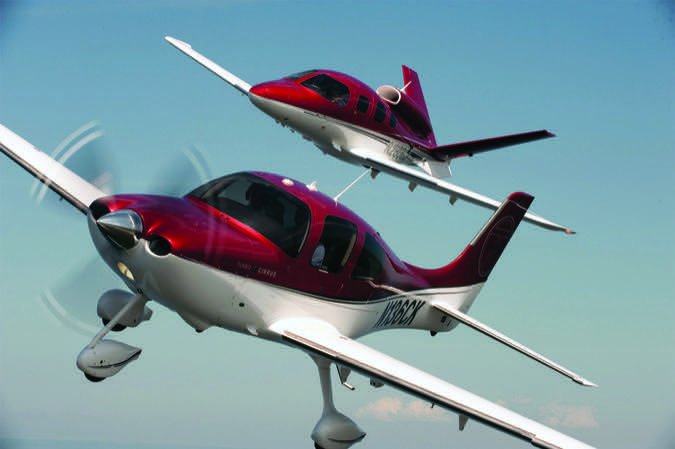
Once you have a private certificate or better, your paperwork says you are qualified to fly any aircraft in the specified category and class. The only limitation is the requirement for a type rating if the airplane is powered by a jet engine and/or has a maximum takeoff weight of 12,500 pounds or more. Once you have your high-performance and complex aircraft endorsements, you could go straight from flying a Cessna 152 or Cherokee 140 into a TBM 850.
Practically speaking, the insurance industry defines what is safe. You won’t find an insurance company that will cover your transition from a Piper Arrow to a Pilatus PC-12 without a significant amount of training or a checkout. And if you want to trade up from your Cirrus SR22 to the SF50 Vision jet, you’ll still need a type rating on top of what your insurance carrier wants.
Training Is Key To Your Transition
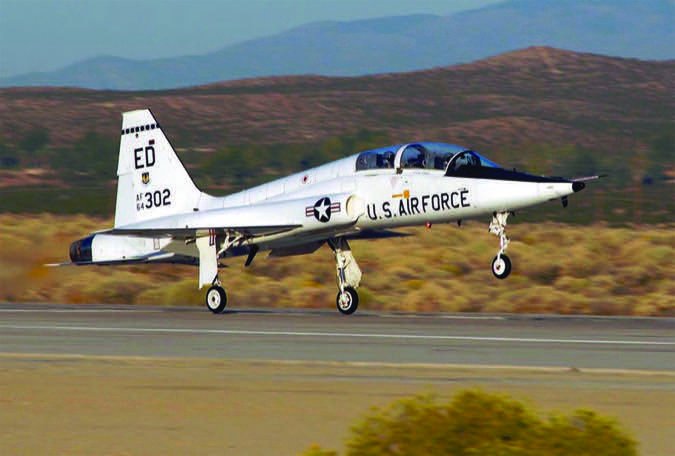
About the same time I completed my training in the Cherokee 140 of my youth, a friend started his training at the U.S. Air Force Academy. By our early 20s, we both had about the same few hundred hours. I had stepped up and was flying the heavier and more powerful Cessna 182. He was soloing supersonic T-38 trainers.
The major difference was our training. My friend knew his plane well before he ever stepped into the cockpit. He had a semester or two of ground school to learn its powerplant, systems and avionics. He had simulator time and many tests on regular and emergency procedures under his belt. For my 182 transition, I was given the POH and a next-day appointment for the checkride and my high-performance endorsement.
Systems and Complexity
Conflating knowledge can significantly interfere with knowing how to fly the plane you are in. If you move from a very simple plane like a Cub to an IFR-equipped twin, that is a major transition. However, the planes are so different, there is fairly little interference with learning. You will never fly the twin like a Cub or vice versa.
The Seneca and Navajo, on the other hand, are technically in the same family, and the big risk is conflating them. A checkout in one plane could easily be considered good enough for the other. The problem is that there are several significant differences. For example, both planes have electric fuel boost pumps. On the Navajo, the boost pump is ‘on’ as part of your descent-to-landing checklist. However, on the Seneca, it is an emergency backup system. If you turned it on while doing a power reduction for landing, it would likely flood and kill the engine. Conflating the systems of two similar planes could have a hugely different outcome on your flight.
The antidote: Get to know—intimately—the systems of every plane you fly. That is the single most useful thing you can do before you transition to a new plane. If you know how the retractable gear actually works, you will more readily find and identify problems on your preflight inspection. And when it comes time to do a for-real emergency gear extension, you will already know what’s going on with the system. It will be much easier to do the right thing at the right time.
Speeds and Performance
The speed you fly in the traffic pattern can be an immediate flight safety risk if you get it all wrong. When I first came into a pattern with the Piper Navajo, my inclination was to snuggle up to the runway like I was in my Cub or Skywagon. Not a good idea. A high-performance twin, like a Navajo, doesn’t fly Cub-slow. It likes to be at 120 KIAS or greater in the pattern. That means wider turns.
Compared to a slower single or even a twin like a Seneca, everything happens faster in the Navajo. It doesn’t only fly faster. The best-rate-of-climb for single engine airspeed VYSE is a critical number for twins like the Navajo and Seneca. It is two to three times faster than the best-rate-of-climb speed (VY) for the Cessna singles I have logged 1500 hours of flight time in. When you’re flying a plane like the Navajo, you don’t want to be below speed until you are almost crossing the numbers.
In the backcountry, the way I slow down my Cessna 180 in the pattern and before landing would get me killed in a Navajo, even with both fans turning. It is easy enough to remember to keep up my speed, but my mental habit of getting slow for backcountry flying is at odds with the aerodynamics of the faster planes I’m flying.
The antidote: Learn how the plane you are flying is designed to fly the pattern. If it is a lot faster than what you’re accustomed to, you will need to modify your normal procedures for that plane and understand what changes in the way you fly the pattern. Don’t to try to force it into a pattern that is best for another plane.
Smoothing the Curve
Markus Eigenheer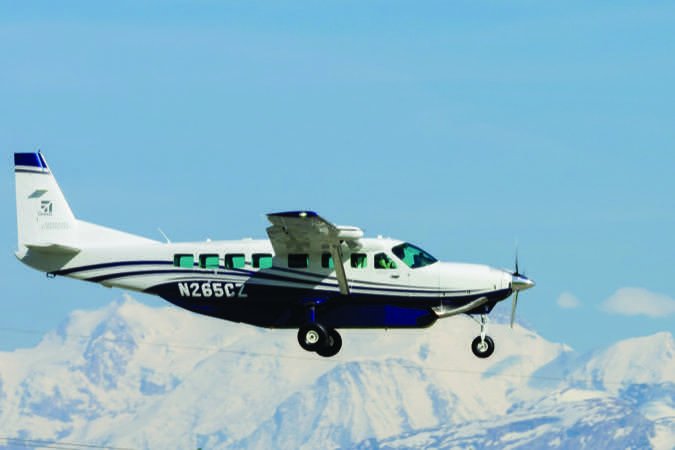
The biggest danger in transitioning planes is when conflation, muscle memory, habits and assumptions get in the way. Training and checklists exist to make sure you know how to fly a plane from before you actually leave the ground until you eventually land it. You need to understand the airplane’s systems and complexity, and its preferential airspeeds and performance. If you’re smart, you’ll use flow, checklists and mnemonics to make sure you are completely focused and prepared. Even seemingly little things, like double-checking yourself to make sure you remember your airframe and N-number (see the sidebar on the opposite page), and gathering tribal knowledge from others about how the plane likes to fly can all make a difference between a safe flight, confusion or a mistake.
Flow, Checklist, mnemonics
There are three things that will save your bacon when moving between airframes: flows, checklists and mnemonics. I have realized that all the airframes I have flown are very similar in the way they fly and land. Yes, muscle memory needs to be programmed to get the feel of each new plane, but the attitude and instrument flying are pretty consistent. Formulas like 1.3 times the stall speed for approach work well and when you flare each plane, you have to keep pulling back at about the same rate if you want to hear the stall horn when the wheels touch.
However, the configurations and checklist items for every plane I have flown are often substantially different. Some have boost pumps, other do not. Some have retractable gear, others do not.
Flows are a model I wish I had been taught earlier in my flying career. A flow is basically a memorized series of sequential action prompts that move smoothly from one part of the flight deck to the next for each phase of flight. So far in my experience with the planes I am flying, the flow always starts down and between the seats, works up the throttle quadrant, across the circuit breakers and instrument panel, and then to the overhead switches and gauges.
You learn an aircraft by learning its flow for pre-startup, startup, taxi, run-up, pre-takeoff, climb, cruise, descent, pre-landing and post-landing. A good flow will work on every airplane, but every airplane will have different items at each point in the flow. This is the key to learning a new plane—learning its particular flow. If you do your flow with your checklist in hand prior to each phase of flight, you can verify you have remembered everything that needs to be done for that particular plane for that phase of flight. Ideally, the checklist should match the flow, and the flow will align with the checklist.
This is where systems knowledge and avoiding conflation plays a critical role. If you know the systems of the plane you are flying, you should know what the settings should be. Then you will do the right thing in the flow and cross-check it with the appropriate systems checklist. You never want to conflate the flow or checklist with a similar airplane. Remember the example of the fairly similar Seneca and Navajo? If you conflated their flow, you could easily turn boost pumps on when they should remain off, or visa versa.
Mnemonics are a simple way of double-checking yourself before you fly off in a different plane. You want to make sure you haven’t missed any key items before take off or landing. While the GUMPS check may seem silly for people who don’t fly retractable gear aircraft, muttering it over the final approach fix and on short final is better than hearing the sound of sheet metal on pavement.
Individual airframe idiosyncrasies are another very useful thing to know. When the heavy stuff is in the wrong part of the plane, you will see it when you calculate the weight and balance, but every plane is different. Flying cargo has been a great way to see the effects firsthand. The Seneca is loaded with heavier items to the front of the cargo area. The Caravan does better with the heavy stuff in the aft section. Two similar planes, and yet not so similar. Some of this information will be a part of learning about the plane itself, but a lot of specific airframe idiosyncrasies are passed on through tribal learning, the folks who teach you about the aircraft.
Airframe Types and N-Numbers
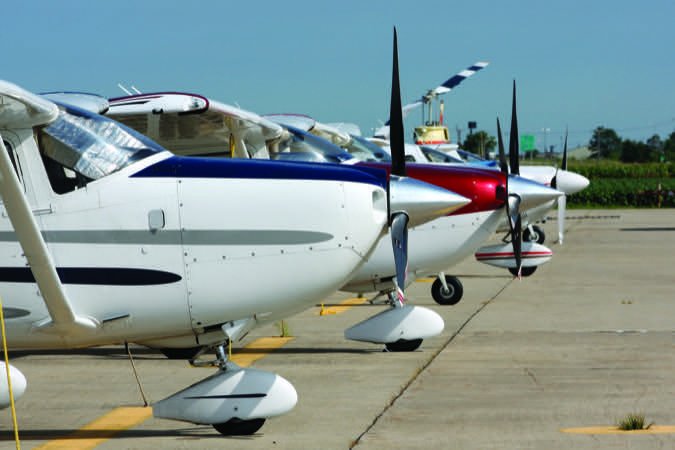
Communications are the most common gotcha when transitioning between aircraft. Every time I switch planes, I have to look at the N-number placard before contacting tower, ground, clearance or approach. I tend to hear my N-number when it comes up on frequency, but to my chagrin, I have realized how easy it is to give the type and number of the last plane I flew, especially after routinely flying one plane day-in, day-out and then switching airframes.
Giving the wrong N-number isn’t a direct flight safety risk, but if you called yourself a Cub or a Skywagon when you are actually a Caravan or a Navajo, you are sharing confusion. It is like sharing a virus. Your first call into ATC starts their mental process of sorting where your plane needs to be sequenced into their work. If you gave your call sign wrong, the controller has a good chance of continuing the mistake, which only causes more confusion. Take your time. Get the call sign right the first time.
Transitioning Rewards
Transitioning among airplanes is a big deal. Maybe you’re like the average GA pilot—you only fly one plane at a time, and have no immediate plans to step up or down to a different one. But when you do switch planes, remember that conflation, muscle memory, habits and assumptions can get in your way. Take advantage of all the information available about the plane you will fly before you fly it—book knowledge, simulators, flight training and tribal knowledge—just use all the tools available. The idea is to make sure you know what you are doing from preflight to landing.
Mike Hart flies his Piper J3 Cub and Cessna 180 when he’s not schlepping people and packages. He’s also the Idaho State Liaison for the Recreational Aviation Foundation.

